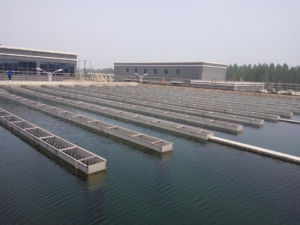
The demand for water has been on an upward spiral for years. And, municipalities have come to rely on utility fee revenue for big chunks of their budgets. In fact, water has provided funding for all kinds of citizen services in the past. Unfortunately, that revenue has been diminished significantly of late.
Because of COVID-19’s impact on the economy, many cities have been forced to suspend or waive utility fees for citizens and businesses. The loss of that revenue directly impacts many planned projects and services. As critical as water infrastructure is for economic vitality, many critical water projects will be put on hold because of revenue shortages.
Congress has passed legislation for supplemental funding to some cities, but not to all cities. Unfortunately, Congress allocated funding for cities with populations of 500,000 or more. The lack of inclusion is more than hurtful for many municipalities.
In Texas, the city of Laredo set aside $1.5 million for citizens and businesses unable to pay their utility bills in March, April and May. The city’s financial situation was dire before COVID-19, and before it became necessary to forego that funding. The city’s projected budget shortfall is now at $18 million-$27 million.
 In Tennessee, the Brentwood City Commission voted last month to waive a 10 percent late fee and disconnection charge for water and sewer service through May if residents and businesses become past due on their accounts. The loss for the city is conservatively estimated at $30,000, but, the loss will increase significantly if the problem continues. Similar situations exist throughout the country.
In Tennessee, the Brentwood City Commission voted last month to waive a 10 percent late fee and disconnection charge for water and sewer service through May if residents and businesses become past due on their accounts. The loss for the city is conservatively estimated at $30,000, but, the loss will increase significantly if the problem continues. Similar situations exist throughout the country.
The Brockton City Council in Massachusetts voted in May to increase rates and fees for water and sewer, but because of the economic stress of citizens, the increases had to be suspended. The city has longstanding infrastructure problems and an under-funded, extremely aging water system. With anticipated revenues curtailed, there is little that can be done by city leaders.
In spite of the funding problems of many cities, there are hundreds of water projects coming through planning and design phases. Most of these upcoming projects will be funded through bond elections, grant programs, and budgets that have withstood the repercussions of COVID-19.
The city of Greenville, Michigan will soon ask voters to approve a bond package to fund the first of a three-phase wastewater plant renovation and expansion. The entire project has a cost estimate of $22 million.
The Lake Oswego City Council, in January 2020, approved the exploration of a public-private partnership (P3) to design, build, finance, operate, and maintain a new wastewater treatment plant. This project would be an alternative to upgrading the current Tryon Creek Wastewater Treatment Plant. The city has spent $450,000 for consulting services to explore this option. An official decision related to a delivery method for the project is expected in 2021.
In Kansas, the city of Topeka has plans for a $4.1 million project to rehabilitate its West Intake water plant. The project will include structural repairs and modifications as well as repairs and replacement of equipment. The city also plans to rehabilitate a West Plant Basin plant with structural repair, modifications and equipment replacement. This project has a projected cost of $16 million.
New Hampshire’s city of Portsmouth will upgrade its Pease Wastewater Treatment Facility at a cost of approximately $27 million. In 2019 the city submitted a wastewater permit renewal application to the Environmental Protection Agency (EPA) requesting an increase in design flow rate from 1.2 million gallons per day (MGD) to 1.7 MGD. The increase in flow rate will support the build out of the Pease International Tradeport and provide capacity at the treatment facility for the intended expansion of a pharmaceutical and biotech company. Planning for the project is underway, but full design and construction will have to wait on an updated permit from the EPA.
The city of Falls Church, Virginia currently has a 1.0 MGD sanitary sewer treatment capacity from Fairfax County for use of the Alexandria Wastewater Treatment Plant. Projected flows from future development within the city, however, exceed the current capacity. The city plans to pay $14.1 million for additional treatment capacity. Fairfax County has quoted the rate for additional treatment capacity as $13.3 million per MGD, which is the basis for the cost of additional capacity to be added over the next three years. The city will also spend $4.2 million in 2021 for its West End Sewer capacity expansion. This project will provide additional sanitary sewer capacity for the West End of the city for the new George Mason High School, a 10-acre development and downstream infrastructure.
Companies interested in water projects will be in high demand for the next decade because water infrastructure throughout the U.S. is in dire need of attention. Cities, counties, engineers, construction and water-related firms are all hoping that Congress will support water infrastructure project funding in the long-promised and long-overdue infrastructure bill.
